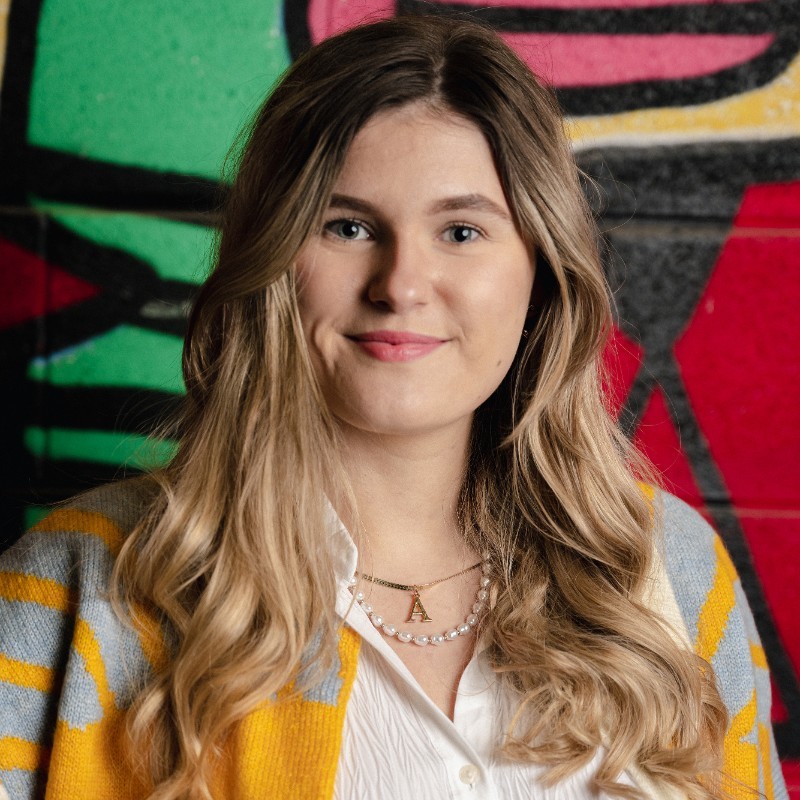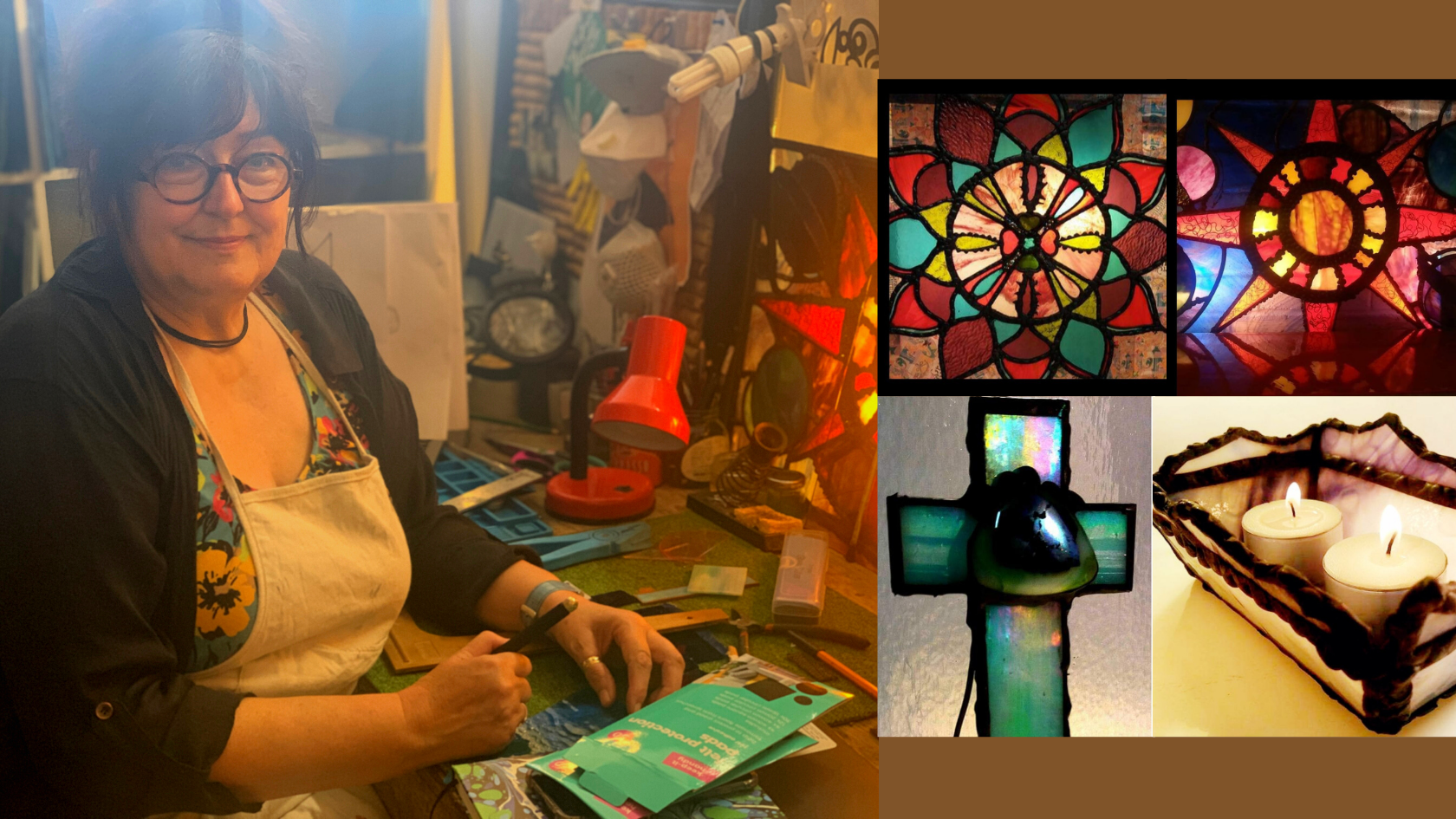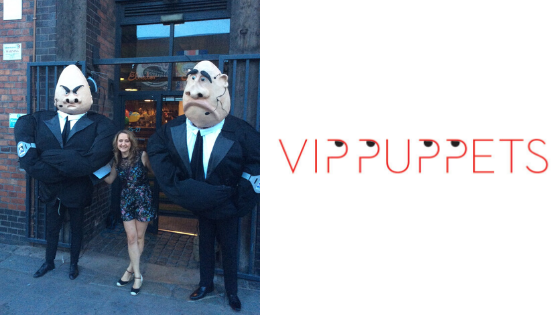We’re heading into summer with a brand new monthly maker from stained glass artist and Make Baltic resident, Sue Grafflin. Sue and I met at our Baltic open-plan studios on a quiet Thursday afternoon. Sue told me about how she got into working with stained glass, spoke about some of her fascinating past work and some exciting things coming up. If you want to learn more about the wonders of glass, have a read!
Hi Sue, can you tell us about your craft?
I do stained glass work, which covers repairing stained glass windows, to designing and making them. I used to install the windows too, but I don’t do that anymore as it’s a bit much for me to go up scaffolding and ladders.
As well as that I also make craft things that people can have in their homes, and I make stained glass light boxes that you can have on your wall. The boxes can be in any size, from a foot square to a ten-foot square. And you can have them in your garden too!
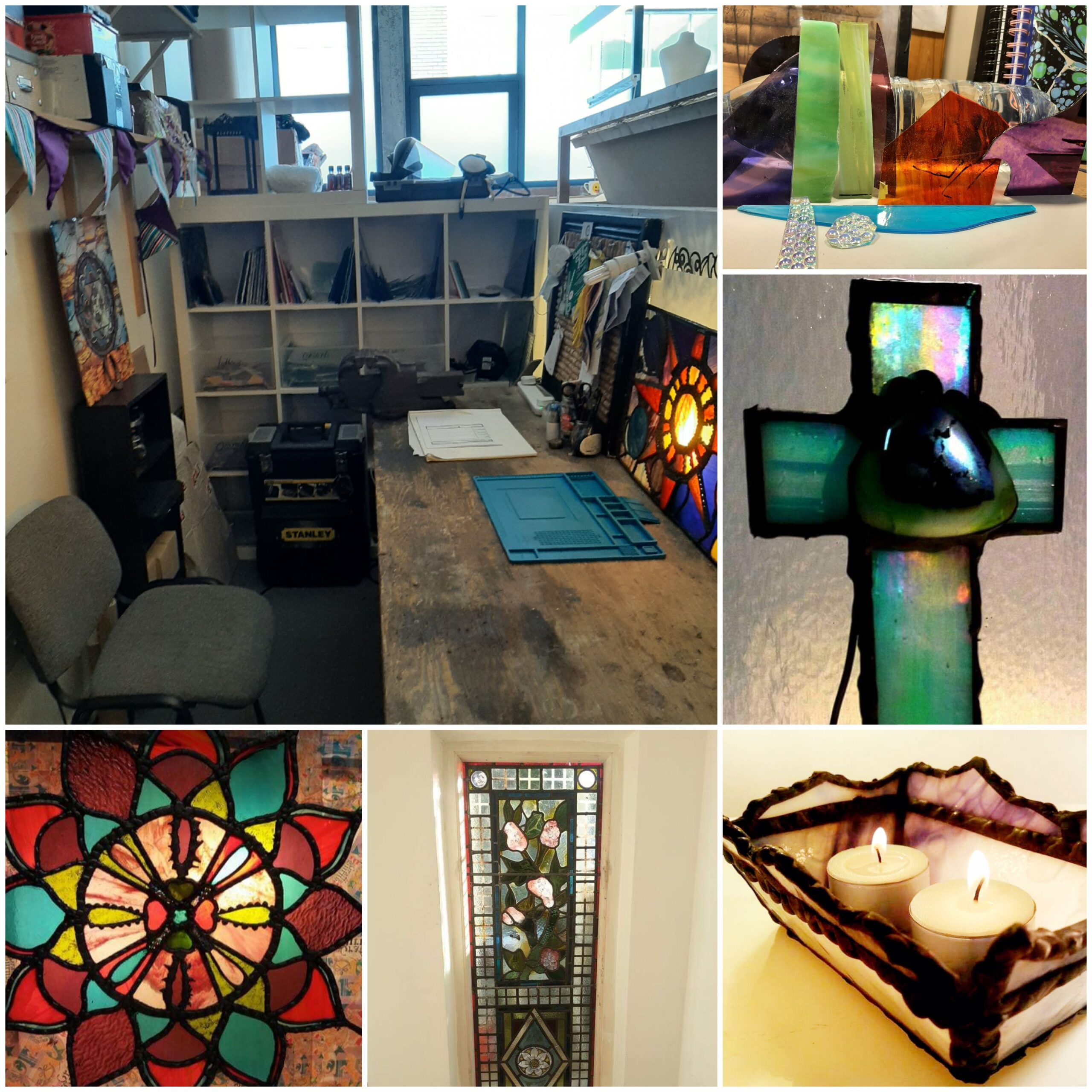
How did you get into stained glass?
I started as an office helper for a leadlight maker about 20 years ago. At the time I was an artist, I used to do painting and drawings. I was so intrigued by what the light maker was doing. He used to carry these massive panes of glass in, lay them on the bench and cut them. One day I said I would like to have a go. So he just gave me a cutter, said go and get that piece of glass (which scared me because it was huge!), then he helped me lay it down and cut it. He told me that you have to listen to the cutter; it’s like a heartbeat. When you first do it, you don’t understand what he means, but now I know. So that’s when the passion for glass really started.
You mentioned that you’ve always been an artist. What sparked your initial passion for art?
In science at school in 1974, we went to a glass blowing company in London, and we all had a go at it. I was transfixed with the process of it. But back then, that wasn’t something that women went into. My parents insisted on me being a secretary, so I was encouraged down that route.
One of my other passions was horses, and I used to draw them in school. I also used to do collage which I still have a love for. Then I didn’t really do much art until my daughters were born, and I started doing art classes with them at home. I started drawing Paddington Bear for them, and it sparked that interest again. So I started doing painting and drawings.
Then as a mature student, I went to Barnfield college to study ceramic design. So I can do ceramics too, but I haven’t done it for a while. I would love to get back into that because I can combine ceramics and glass. This Saturday, I’m doing a woodwork course at Make because I would love to learn to make the structure of my lightboxes.

I also have a passion for metals, and I would like to combine all of the different materials. In past projects, I’ve used wire and lead in unique ways as I like to experiment. Sometimes it turns out well, and sometimes it doesn’t, but it’s about giving it a go.
What tools do you use to cut glass with?
The cutter is finger-shaped, about 7 inches long, and has a diamond bit in the actual cutter part. Some of the glass cutters you can put oil in or some you don’t have to. The end of it is a tiny wheel, you dip it, and it scores the top of the glass. Once you have scored the glass properly, you hold each side of the cut with your thumb and finger and pull it apart. If you’ve got a big sheet of glass, you have to do it with a long rule underneath it. It’s really satisfying to do, and there are loads of documentaries on Youtube if you want to see how it’s done!

What has been one of your favourite projects you’ve worked on?
I did a church restoration. The windows were not particularly old, but they were in an entrance of an old church. Someone had made a mosaic effect glass window and put them in the entranceway. But over 80/90 years, the glue had disintegrated. So I had the job of taking them out, repairing them, putting them back together again, and fitting them back in. There were two windows about 4 feet each and four sets of them. The design had to be exactly the same as the original design, and I had to source old glass and research glues, which was exciting. I’d never researched glue before! That’s when I discovered UV light bonding. With UV bonding, once you have the right glue and light, it’s easy and a great thing to do. I’d love to teach classes on it. It’s something you can do at home without a workshop.
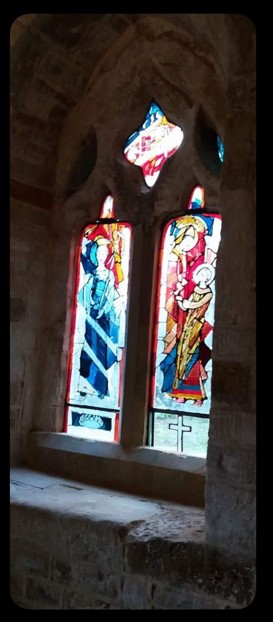
What was your journey working in stained glass?
I worked for the leadlight maker for a few years, and he was packing up, so I moved on to a glass supply company in London. I taught leadlight making courses there too, which I love doing. After that, I stopped for a while to look after family members. I then went on to work in a hospital as a healthcare assistant for 2 years. Unfortunately, during this time, I got Covid. So I’m starting to get better and back into the swing of things with glass again.
I have two projects I’m working on at the moment with the Glass World in St Helens. They are interested in having my work in their shop, as I make bespoke glass candle dishes. I applied through an ad on Facebook, and they accepted me, which is really exciting.
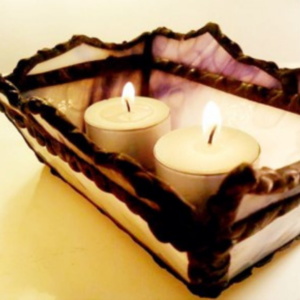

I’m also working on a project for Liverpool Horror Club. I’m doing a range for them at the moment based on horror films. The piece I’m currently working on is based on the Hellraiser films. I’m going to make a range of 4, including candle holders and lightboxes.
Where do you source your glass from?
All over! There is a place called Kansa Craft, Warm Glass, Pearsons Glass; loads. But I have so much glass that I’ve collected over the years and was given some from my old boss, so I only really buy new materials for specific projects.
What would your advice be for anyone thinking of getting into a new craft?
It takes time. Even when I first started with glass, sometimes, I thought that I would never be able to do this. My boss would be busy out on jobs, and I’d be left to do the glass and think I can’t do this. But you can. You’ve got to keep going. Don’t get to the point where you get so frustrated that you give up. Walk away from it for a little bit and take a break. With persistence, it becomes a passion. If you’re working full time or have a busy home life, it can be hard to fit crafts in, but even if you spend a couple of hours a week on it, it can be really therapeutic. There’s lots of craft groups around that you can join, you can meet new people who have the same passion as you, which is nice.
Have you learnt anything new recently?
Working with the Liverpool Horror club has challenged me to think about how to replicate the images. And I’ve discovered that there are ways to do it. It’s about being creative!
What is it like having a studio at Make?
I love it! It’s nice having Cath* here because I love collage, so hopefully, I’ll be able to join one of her workshops soon. I’m looking forward to getting into the studio more, and meeting all of the different makers here and finding out what everyone does.
*Fellow Make Baltic resident and founder of Cut Out Collage.
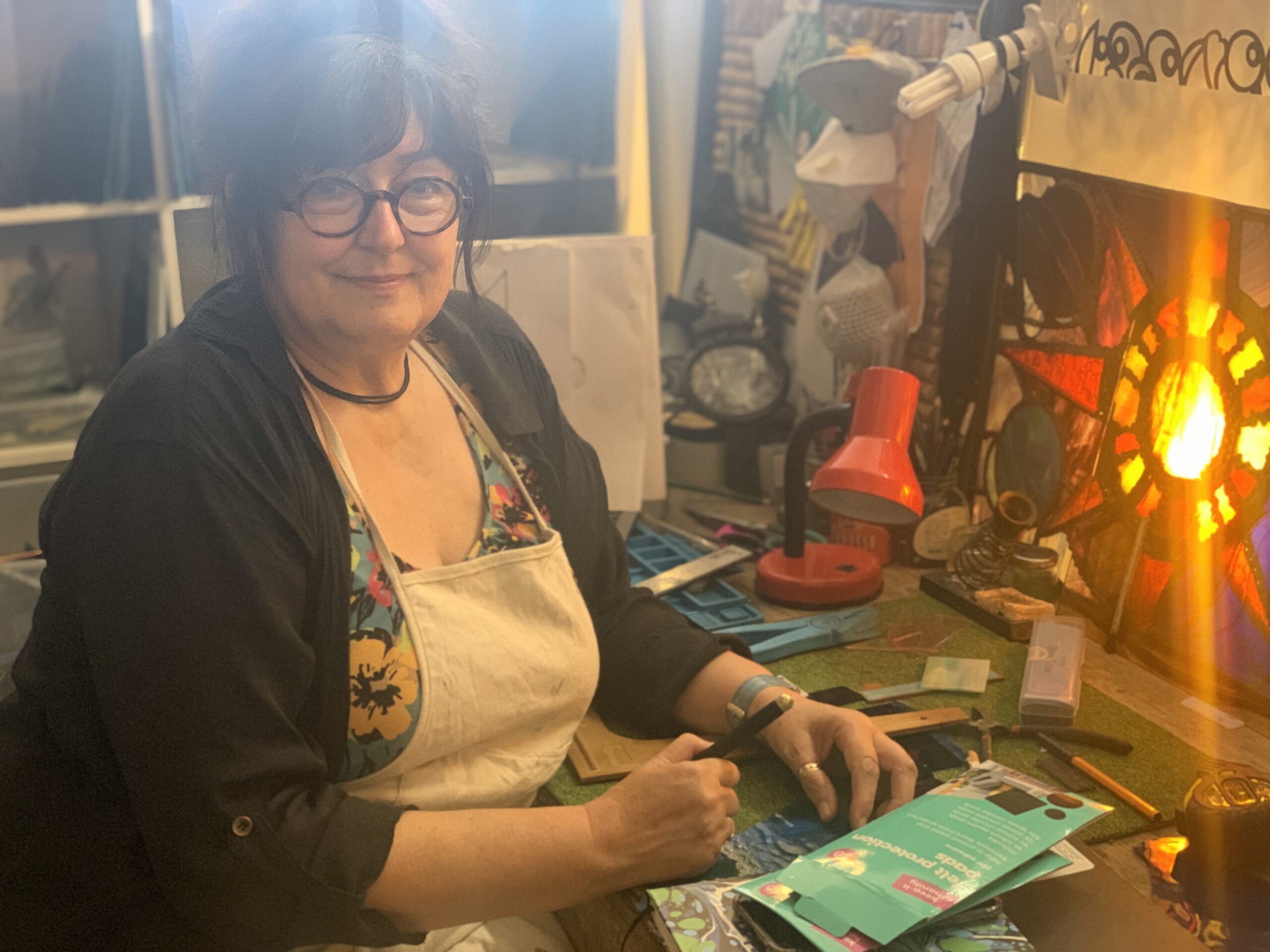
INTERESTED IN JOINING Sue IN THE MAKE COMMUNITY?
We’d love to have you! Find out more about our studios HERE or drop us a line at HELLO@MAKECIC.ORG.
Be sure to follow us on INSTAGRAM, FACEBOOK, and TWITTER and SIGN UP to our mailing list to stay up to date.






